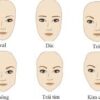Interpreting Body Language: Reading Signs through Emotional Expressions and Moods
Welcome to our website dedicated to exploring the fascinating world of body language and its connection to emotional expressions and moods. Our bodies have a unique way of conveying our innermost feelings and states of mind, offering valuable insights into our emotional well-being and temperament.

- Facial Expressions:
The face is a powerful canvas for expressing a wide range of emotions. Here are some key facial expressions and their interpretations:
a) Smiling: A genuine smile reflects happiness, joy, and a positive state of mind. It indicates friendliness and approachability.
b) Frowning: A furrowed brow or a downward curve of the mouth suggests unhappiness, frustration, or concern. It may indicate a need for support or understanding.
c) Raised Eyebrows: Raised eyebrows can convey surprise, curiosity, or intrigue. They may signify an eagerness to explore new ideas or experiences.
- Eye Contact:
The eyes play a vital role in nonverbal communication, revealing a person’s emotional state and level of engagement. Here are a few eye contact cues and their interpretations:
a) Direct Eye Contact: Sustained eye contact demonstrates confidence, interest, and attentiveness. It signifies a genuine connection and engagement in the conversation.
b) Avoiding Eye Contact: Avoiding eye contact may indicate shyness, discomfort, or a desire for privacy. It can also suggest feelings of guilt or dishonesty.
c) Darting Eyes: Rapid or restless eye movements may suggest anxiety, nervousness, or a lack of focus. They may indicate that the person is distracted or overwhelmed.
- Body Movements and Posture:
The way we move our bodies and hold ourselves can also reveal our emotional states. Here are a few notable cues:
a) Open and Relaxed Posture: Standing or sitting with an open and relaxed posture signifies confidence, ease, and a positive outlook. It reflects a sense of emotional well-being.
b) Tense and Closed Posture: Holding the body tightly or crossing the arms and legs can indicate defensiveness, discomfort, or a guarded emotional state.
c) Fidgeting: Restless movements, such as tapping fingers or foot tapping, may suggest impatience, nervousness, or inner turmoil.
Remember that interpreting body language is an art, and context is crucial. People may display different emotional expressions and moods based on various factors, including cultural backgrounds and individual personalities.
Seeking Professional Help:
While understanding body language can provide valuable insights into emotions and moods, it is important to remember that it should not replace professional help or mental health support. If you or someone you know is experiencing emotional challenges, it is advisable to seek assistance from qualified professionals.
Explore our website to delve deeper into the captivating world of body language and emotional expressions. Gain a better understanding of how nonverbal cues can help you connect with others, navigate social interactions, and enhance your emotional intelligence.
Disclaimer: The information provided on this website is for educational and entertainment purposes only. It should not be used as a substitute for professional advice or therapy. Always consult with qualified professionals for any concerns or questions you may have.
Note: The interpretation of emotional expressions and moods through body language can vary across cultures and individual experiences. The information provided on this website is a general overview and may differ from specific cultural practices or interpretations.

